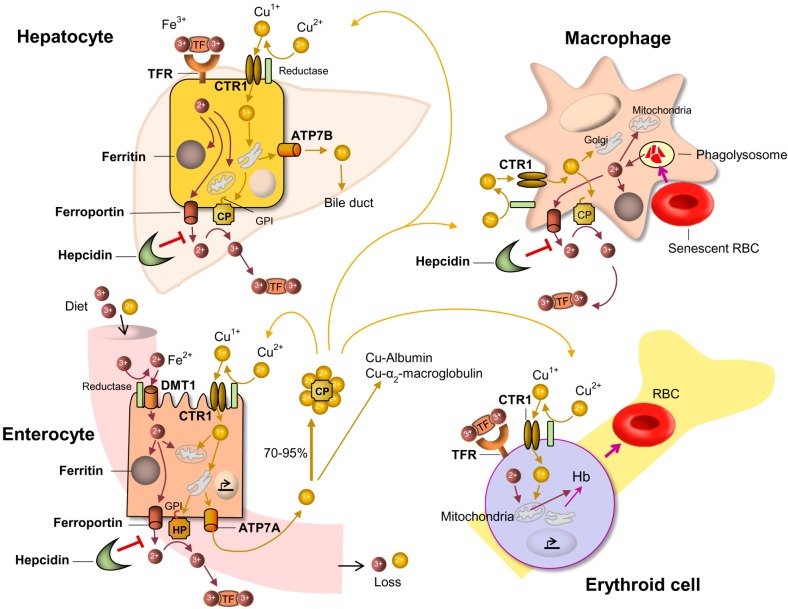Fig. 1. The iron and copper transport pathways and their interactions. Into the enterocytes, dietary iron and copper are absorbed by DMT1 and CTR1, repectively, after reduction. Iron and copper are exported from enterocyte by ferroportin and ATP7A, respectively. Copper deficiency decreases the quantity of HP which is required for efficient enterocyte iron efflux and loading onto TF. CP carries 70–95% of the total copper in plasma. Hepatocytes can take up Fe-TF by TFR. Copper taken up by hepatocyte CTR1 is delivered to ATP7B and CP. CP facilitates iron loading onto TF by oxidation (Fe2+→Fe3+). Hepatocytes control iron metabolism by producing the hepcidin which inhibits iron export. Fe-TF is transported to the marrow and utilized for the erythropoietic activity. Iron taken up by erythrocyte, the major iron consumer, is transferred to the mitochondria together with copper, and used for heme systhesis. Copper deficiency can impair the uptake of iron by mitochondria and cause decrease of heme synthesis. Macrophage phagocytoses senescent RBC and the irons are utilized or stored in ferritin.
Abbreviations: ATP7A, ATPase Cu2+ transporting alpha polypeptide; ATP7B, ATPase Cu2+ transporting beta polypeptide; CP, ceruloplasmin; CTR1, copper transporter 1; DMT1, divalent metal transporter 1; Hb, hemoglobin; HP, hephaestin; GPI, glycosylphosphatidylinositol; RBC, red blood cell; TF, transferrin; TFR, transferrin receptor.

